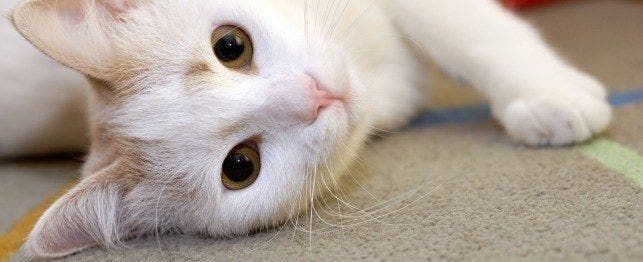
Why Do Cats Purr?
Why Do Cats Purr
When your cat climbs into your lap, tucks in his paws under himself, and begins to purr, all is right in his world. This is one of the things we love about our cats; that feeling of contentment they share with us. When cats become soft purring bundles of warm reassuring fur, we feel calmer and more peaceful ourselves. We may not always hear the purring – a soft vibrating rumble – but we can feel it. But why do cats purr? And what produces this characteristic sound?
According to veterinarian Bruce Fogle, author of The Cat’s Mind, the original function of purring was to enable a kitten to communicate with his mother that things are well. A kitten is able to purr by the second day of life, and although he can’t meow and nurse at the same time, he can purr and nurse. And the mother cat often purrs back, probably to reassure the kitty.
There are many theories to explain how the purr is generated. One study determined that purring involves activation of nerves within the voice box. These nerve signals cause vibration of the vocal cords while the diaphragm serves as a piston pump, pushing air in and out of the vibrating cords, thus creating a musical hum. Veterinarian Neils C. Pederson, author of Feline Husbandry, believes that purring is initiated from within the central nervous system and is a voluntary act. In other words, cats purr only when they want to.
Purring is an integral part of the feline communication system and occurs for a variety of reasons. It is classified with the “murmur vocalization” group, which involves sounds produced by a cat while the mouth is closed. In addition to purring, this group of sounds includes grunting, calling, and acknowledgment murmurs. Domestic cats and some wild cats, like pumas and mountain lions (almost any big cat that cannot roar), are all able to purr.
As the cat matures the meaning of the purr changes. Some cats purr to indicate contentment or pleasure, but badly frightened cats and severely ill cats also purr, and so do females while they are delivering their kittens. It is not uncommon for cats to purr when they are close to death. This final purring may indicate a state of anxiety or possibly euphoria, states that have also been described in terminally ill people.
Animal behaviorists believe that when cats purr under stressful circumstances, they are reassuring or comforting themselves, much as humans may sing to themselves or hum when they are nervous. Frightened cats may purr to communicate submissiveness or non-aggressive intentions. A feral cat may purr to signal that he will not attack and other cats need not feel threatened. Older cats may purr when they play or approach other cats, signaling that they are friendly and want to come closer.
A more recent theory about purring is that it is caused by the release of nature’s own morphine-like substances (endorphins) in the brain. Since endorphins are released under circumstances of pain and pleasure, this would explain the seemingly ambiguous expression of purring. This theory jives with Pederson’s reasoning, that purring is initiated in the brain, and is also compatible with the more mechanical explanations for purring, as endorphins activate one of the main action systems in the brain (so thought is translated into movement). Whatever the explanation for purring, it seems to indicate cats’ contentment and is associated with improvement in their affect at times of stress. Purring is one of cats’ most endearing qualities.
I hope this gives you more information on why cats purr.